Tamilnadu State Board New Syllabus Samacheer Kalvi 5th English Guide Pdf Term 1 Supplementary Chapter 3 The Legend of Jaswantgarh Text Book Back Questions and Answers, Summary, Notes.
Tamilnadu Samacheer Kalvi 5th English Solutions Term 1 Supplementary Chapter 3 The Legend of Jaswantgarh
5th English Guide The Legend of Jaswantgarh Text Book Back Questions and Answers
Let us Understand:
A. Answer the following questions:
Question 1.
Where is Jaswantgarh located?
Answer:
Jaswantgarh is located in Arunachal Pradesh.
![]()
Question 2.
Which place was the last stand of the Indian army?
Answer:
Nauranang was the last stand of the Indian Army.
Question 3.
When did the battle of Nauranang start? How long did it continue?
Answer:
The battle started on 17th November 1962 and continued for seventy-two hours.
Question 4.
Who helped Jaswant in the battle against Chinese?
Answer:
Two village girls named Sela and Nura helped Jaswant.
Question 5.
What happened to the two girls at the end of the war?
Answer:
A grenade blast killed Sela and Nura was captured alive.
Question 6.
How was he honored by the Indian government?
Answer:
Indian Government awarded him the Mahavir Chakra.
![]()
B. Fill in the blanks:
Question 1.
Jaswantgarh is named after the Indian soldier _______.
Answer:
Jaswant Singh Rawat
Question 2.
The Chinese troops attacked the lonely Indian post located in _______.
Answer:
Nauranang
Question 3.
Jaswant was helped by _______ tribal girls.
Answer:
village
Question 4.
Jaswant managed to kill _______ Chinese soldiers.
Answer:
300
Question 5.
Jaswant Singh Rawat was awarded _______.
Answer:
The Mahavir Chakra
![]()
C. Say true or false:
Question 1.
Nauranang is in Himachal Pradesh.
Answer:
False
Question 2.
The battle of Nauranang lasted for three days.
Answer:
True
Question 3.
Jaswant decided to stay in his post.
Answer:
True
Question 4.
Jaswant was captured alive.
Answer:
False
Question 5.
According to the Indian army, Jaswant is still serving.
Answer:
True
![]()
D. Rearrange the story in order:
Question 1.
1. Jaswant stayed back in his post.
2. He killed 300 Chinese soldiers in the battle.
3. He fired weapons from separate points.
4.Sela and Nura helped him in the battle.
5.Jaswant shot himself to death.
6. Chinese soldiers caught the man who supplied food.
7. He was awarded the Mahavir Chakra.
Answer:
1
4
3
2
6
5
7
![]()
D. Try your own:
Question 1.
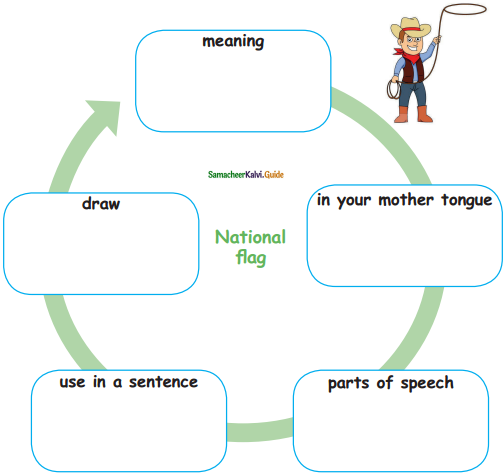
Answer:
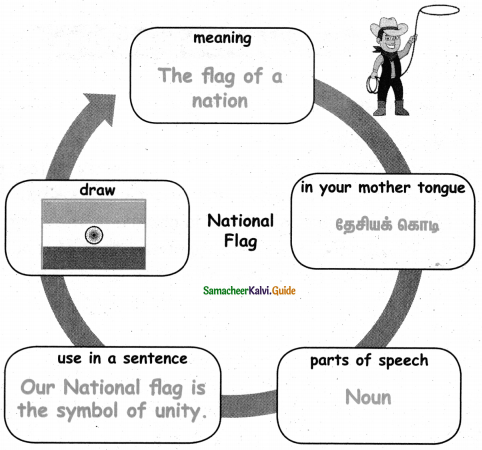
![]()
E. Speak and win:
Question 1.
Collect more information about Jaswant Singh and the incidents and speak it in front of your class.
Good morning everyone. Now I am going to speak about Jaswant Singh…..
Ans:
Jaswant Singh Rawat was born on 19 August 1941 in Pauri Garhwal district of Uttarakhand. The financial condition of his family was not good, so being the eldest son, he decided to join the army. On 19th August 1960, at the age of 19, he joined the Indian Army. He was selected in 4th Garhwal Rifles. In 1962 Indo-Chinese war occurred. He was sent to Arunachal Pradesh. In a battle that started on 17th November 1962 and continued for the next 72 hours, Jaswant Singh alone held the post, firing from different bunkers, constantly on the lookout for the Chinese.
It is said that Jaswant Singh killed more than 300 enemy soldiers. As the Chinese were going to capture him, he shot himself. In the place where Jaswant Singh was martyred, a temple has been built in his name. The statue of Jaswant Singh, given by the Chinese commander has been kept in that temple. India awarded him the Mahavir Chakra.
Jaswant Singh Rawat is the only soldier of the Indian Army, who started. receiving promotions after death. The first hero than Captain and now he has reached the rank of Major General.
![]()
Let us read aloud:
A. Read the passage and color one flag each time you read:
Our national emblem is taken from Ashoka’s pillar at Sarnath. It is found on all government documents, coins, currency notes, postcards, and envelopes. It consists of four lions standing back to back but, we can see only three lions at a time. There is a Dharma Chakra in the center of the base plate, with the figure of a bull on the right and that of a horse on the left. The entire structure is sitting on a lotus. The words ‘Sathyameva Jayate’ is written under it in Devanagari script. These words mean, ‘Truth alone Triumphs’.

![]()
B. Choose the picture for the passage:
Question 1.
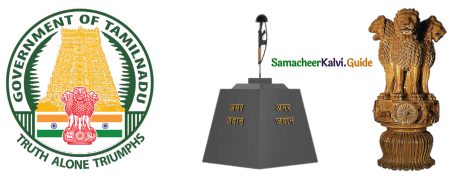
Answer:
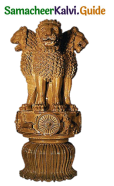
![]()
C. Answer the following:
Question 1.
Where is our national emblem taken from?
Answer:
Our national Emblem is taken from Ashoka’s pillar at Sarnath.
Question 2.
Where is our national emblem found?
Answer:
It is found on all government documents, coins, currency notes, postcards, and envelopes.
Question 3.
What does ‘Sathyameva Jayate’ mean?
Answer:
Sathyameva Jayate means.” Truth alone Triumphs”.
Question 4.
What are the animals found in the emblem?
Answer:
Lions, bull, and horse are the animals found in the emblem.
![]()
Let us Write:
Question 1.
Write the hungry fox story on your own by looking at the pictures and using the clues given under each picture.
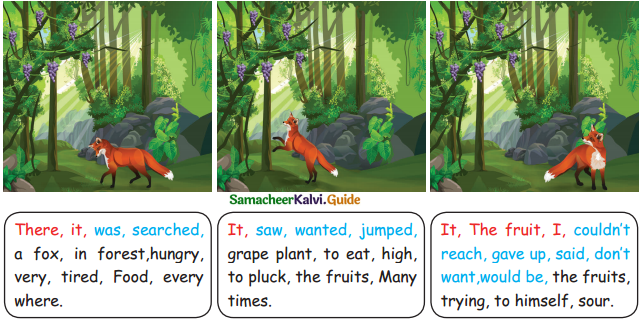
Answer:
There was a hungry fox in a forest. It searched for food everywhere and became very tired. It saw a grape plant and wanted to eat the fruits. But it was very high. So it jumped many times to pluck the fruits. It couldn’t reach and so it gave up trying to get the fruits. It said to himself, “I don’t want the fruit. It would be sour”.
![]()
I can do:
A. Look at the picture and answer the following:
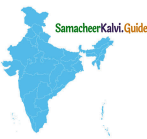
Question 1.
Name of the object
Answer:
Indian Map
Question 2.
In your mother tongue
இந்திய வரைபடம்
Question 3.
Use in a sentence
Answer:
Wrong depiction of Indian map will give punishment up to 7 years in prison or 100 crores fine.
![]()
B. Divide the following words:
Question 1.
garden
Answer:
gar/den
Question 2.
reason
Answer:
rea/son
Question 3.
turkey
Answer:
tur/key
Question 4.
peanut
Answer:
pea/nut
Question 5.
sky blue
Answer:
sky/blue
![]()
C. List out the words under each group and divide them:
sunset, market, feature, moonlight, purple, creature

Answer:

![]()
D. Recite the poem Patriotism:
Activity to be done by students:
E. Fill in the blanks with in, on, at:
Question 1.
She wakes up _______ 5 ‘o’ clock.
Answer:
at
Question 2.
_______ summer, we have more holidays.
Answer:
In
Question 3.
We celebrate Independence day ___ 15th August, every year.
Answer:
on
Question 4.
He walks usually _______ the morning.
Answer:
in
![]()
5th English Guide Lost in Space Additional Questions and Answers
Question 1.
When did India – China war occur?
Answer:
In 1962, India – China war occurred.
Question 2.
What was the Order given to Indian soldiers?
Answer:
The Indian soldiers were ordered to retreat and regroup.
Question 3.
How many days did they fight against the Chinese Army?
Answer:
They fought for three continuous days against the Chinese Army.
Question 4.
What did the Chinese army do to avoid the attack from the post?
Answer:
The Chinese army decided to cut the food supply to the post.
Question 5.
Why were the Chinese soldiers shocked and furious?
Answer:
The Chinese soldiers thought that a single soldier and two girls had fooled them. So, they were furious.
Question 6.
Why did Jaswant shoot himself?
Answer:
Jaswant did not want to be captured by the Chinese. So he shot himself.
Question 7.
What did the Chinese Commander return after the war?
Answer:
After the war, the Commander of the Chinese army returned the brass bust of Jaswant.
![]()
The Legend of Jaswantgarh Summary in English and Tamil
Jaswant Singh Rawat was an Indian soldier, the place Jaswantgarh in Arunachal Pradesh gets its name from him. The legendary story, “The battle of Nauranang”, handed down through the ages of Nauranang is inspiring and records the valor and patriotism of Jaswant.
ஜஸ்வந்த் சிங் ராவட் என்பவர் இந்திய இராணுவ வீரர். அருணாச்சலபிரதேசத்திலுள்ள ஜஸ்வந்த்க ர் என்ற இடம் இவரது பெயரால் உருவானது. ‘நவ்ரானங் யுத்தம்’ என்ற வரலாற்று கதை காலங்காலமாக கூறப்பட்டு, ஜஸ்வந்த்தின் வீரத்தையும், தேசபக்தியையும் பதிவு செய்திருக்கிறது.
There was a war between India and China in the year 1962. In the final part of the war, Nauranang was the last stand of the Indian army against the Chinese army. The battle started on 17th November 1962 and continued for seventy-two hours. At 5.00 am, in the Eastern Himalayas, the Chinese army attacked the lonely Indian post in Nauranang. Knowing that the Chinese army was stronger, the Indian soldiers on the post were ordered to retreat and regroup. But, Jaswant did not leave his post and decided to continue the fight to hold the Chinese until the reinforcements arrive.
1962-இல் இந்தியாவுக்கும் சீனாவுக்கும் இடையே போர் நடந்தது. போரின் கடைசி கட்டத்தில், நவ்ரானங்-இல் இந்திய ராணுவமும் சீன ராணுவமும் நிலை கொண்டிருந்தன. 17 நவம்பர் 1962 அன்று தொடங்கிய யுத்தம்
72 மணி நேரம் நீடித்தது. காலை 5 மணிக்கு கிழக்கு இமய மலைப்பகுதியில், நவ்ரானங் இல் தனித்திருந்த இந்திய முகாமை சீன இராணுவம் தாக்கியது. சீன இராணுவம் அதிக பலம் பெற்றிருந்ததை அறிந்த பிறகு, இந்தியப் படைகள் பின்வாங்க வேண்டுமென உத்தரவிடப்பட்டது. ஆனால் ஜஸ்வந்த் அந்த இடத்தைவிட்டு போகாமல், கூடுதல் படை வரும்
வரை தொடர்ந்து சண்டையிட தீர்மானித்தார்.
![]()
Two village girls named Sela and Nura helped Jaswant. They set up weapons at separate points. Jaswant taught the girls to fireguns. All three kept shooting on the Chinese army. Jaswant was running to different gun points and kept shooting. His intention was to give the Chinese army a perception that they are facing a huge Indian battalion. He did this for three continuous days. Jaswant and the girls had killed three hundred Chinese soldiers. The Chinese army decided to cut the food supply to the post.
சேலா, நூரா ஆகிய இரு கிராமப் பெண்க ள் ஜஸ்வந்த்க்கு உதவினர்.வெவ்வேறு இடங்களில் ஆயுதங்களுடன் நிலை கொண்டனர். அந்தப் பெண்க ளுக்கு துப்பாக்கி சுட ஜஸ்வந்த் கற்று கொடுத்தார். சீன இராணுவத்தின் மீது மூவரும் சுட்டுக் கொண்டிருந்தனர். ஒரு பெரிய இந்தியப்படையை சீன ராணுவம் எதிர்கொண்டுள்ளது என்று சீனர்கள் நினைத்து பயந்து ஓட வேண்டும் என்பது ஜஸ்வந்த்தின் திட்டமாக இருந்தது. அவர் இதனை மூன்று நாட்களுக்குத் தொடர்ந்து செய்தார். அவரும், அந்த இரு பெண்க ளும் 300 சீன இராணுவத்தினரை சுட்டுக் கொன்றார்கள். அவர் இருந்த இடத்திற்கு உணவு கொண்டு செல்லப்படுவதை நிறுத்த சீன இராணுவம் தீர்மானித்தது.
The Chinese soldiers caught the man, who brought food for the three. In the Chinese interrogation, the man told the truth that a single soldier was guarding the post. A single soldier and two village girls had fooled the Chinese. They were shocked and furious. They surrounded Jaswant Singh and launched a final attack.
இந்த மூவருக்கும் உணவை எடுத்துச் சென்ற ஒரு ஆளை சீன வீரர்கள் பிடித்தனர். அவனை விசாரித்தனர். ஒரே ஒரு இந்திய வீரர் மட்டுமே அங்கு இருப்பதாக அந்த ஆள் உண்மையைச் சொல்லிவிட்டான். ஒரு தனித்த இந்திய வீரரும், இரண்டு கிராமப் பெண்களும் சீனர்களை முட்டாள்களாக்கி ஏமாற்றியதை உணர்ந்த னர். இதனால் சீன வீரர்கள் அதிர்ச்சியும் கோபமும் கொண்டனர். அவர்கள் ஜஸ்வந்த்தை சுற்றி வளைத்து இறுதித் தாக்குதலை நடத்தினர்.
Jaswant shot himself as the Chinese were going to capture him. A grenade blast killed Sela. Nura, the tribal girl, was captured alive.
சீனர்களிடம் தான் பிடிப்படப்போவதை உணர்ந்த ஜஸ்வந்த் தன்னைத்தானே சுட்டுக் கொண்டார். ஒரு கையெறி குண்டு வெடித்து, சேலா கொல்லப்பட்டாள். நூரா என்ற பெண் உயிரோடு பிடிக்கப்பட்டாள்.
After the war, the commander of the Chinese army returned the brass bust of Jaswant. A war memorial with the brass bust was made to remember him and his service to the nation. All army personnel who pass through this memorial pay their respect to him.
யுத்தம் முடிந்த பிறகு, சீன போர்த்தளபதி, மார்பளவு உள்ள ஜஸ்வந்த்தின் பித்தளை சிலையை வழங்கினார். ஜஸ்வந்த் தேசத்திற்கு செய்த சேவையை நினைவுபடுத்தும் வகையில், அந்த பித்தளை சிலையுடன் ஒரு போர் நினைவகம் கட்டப்பட்டது. இந்த இடத்தைக் கடந்து செல்லும் எல்லா இராணுவ வீரர்களும், ஜஸ்வந்த்க்கு தங்கள் மரியாதையை
அளிக்கின்றனர்.
The Indian Army still treats him as a serving officer and awards him promotions. India awarded him the Mahavir Chakra. Jaswant may have died in battle that day, but he still lives in the memory of people in Jaswantgarh and the Indian army.
ஜஸ்வந்த் இறந்துவிட்டாலும் கூட, இந்திய இராணுவம் அவரை இன்னும் பணியிலுள்ள அதிகாரியாக கருதி, அவருக்கு பதவி உயர்வுகளைத் தந்து வருகிறது. இந்திய அரசு அவருக்கு மகா வீர் சக்ரா என்ற விருதை வழங்கியது. ஜஸ்வந்த் அன்று போரில் . இறந்திருந்தாலும், அவர் இன்றும் ஜஸ்வந்த்கர் இல் உள்ள மக்களின் நினைவிலும், இந்திய ராணுவத்தினரின் நினைவிலும் வாழ்கிறார்.
![]()
The Legend of Jaswantgarh Glossary:
Battalion- A military unit of 300 to 800 soldiers (300 முதல் 800 வீரர்களைக் கொண்ட படைப் பிரிவு)
Brass bust – A statue made of brass, depicting a person’s head and neck (ஒருவரின் தலை மற்றும் கழுத்தை காட்சிப்படுத்தும் பித்தளை சிலை)
Capture – Catch (பிடித்தல்)
Decided – Determined (தீர்மானித்தல்)
Furious – Angry (கோபம்)
Garwal – An administrative division in Uttarakhand (உத்ராகண்ட் மாநிலத்தில் ஒரு இடம்)
Intention – Plan (திட்ட ம்)
Interrogation – To question someone aggressively (விசாரணை )
Launched – Started (தொடங்குதல்)
Legend – A story from the past (வரலாற்று கதை)
Lonely – Isolated (தனித்த)
Monpa tribe – A tribal group in Arunachal Pradesh (அருணாச்சல பிரதேசத்தில் உள்ள பழங்குடியினர்)
Patriotism – Love for one’s country (தேசபக்தி )
Perception- Idea (நோக்கம்)
Regroup – Uo organize in a new tactical formation (குழுவை புதிதாக மாற்றியமைத்தல்)
Reinforcement -Aditional army to support (ஆதரவாக கூடுதல் படை)
Retreat – Going back (பின் வாங்குதல்)
Surrounded – Enircled (சுற்றி வளைத்தல்)